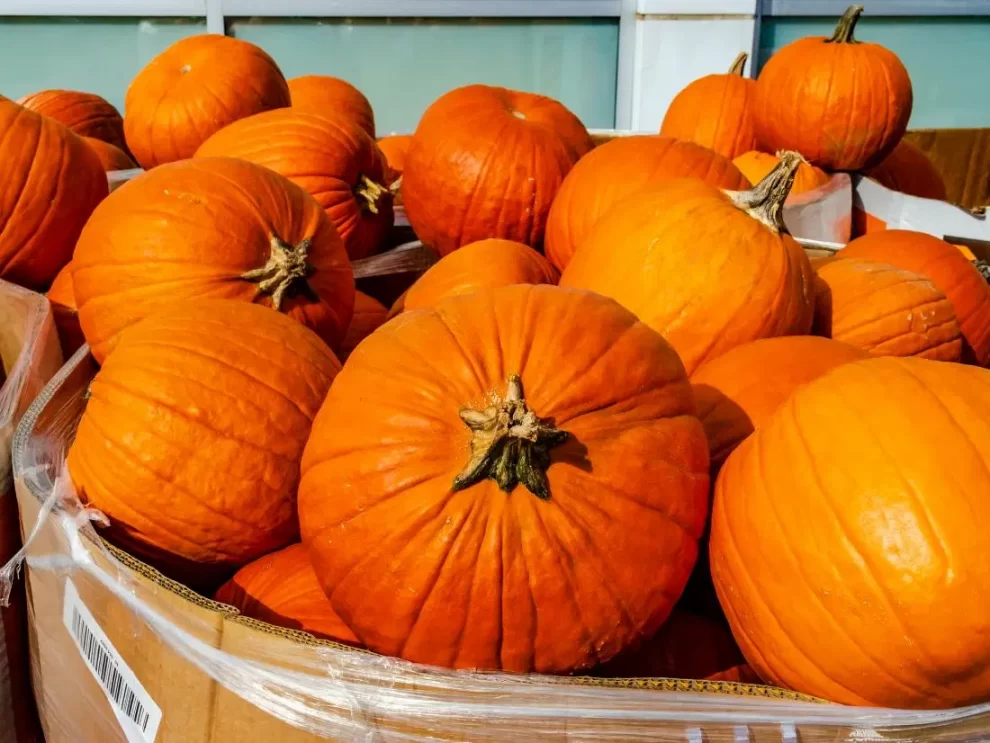The pumpkin is the fruit of the gourd of the genus called Cucurbita or Cucurbitaceae. It is a herbaceous and creeping plant with an annual life cycle. It develops rapidly in hot and humid climates, reaching ten meters in length. It belongs to the same family of other well-known fruits such as watermelon, melon, or cucumber.
It may seem surprising that we define pumpkin as a fruit since we associate it with a sweet taste. However, from a nutritional point of view, it is the edible part of the fruit, which contains the plant’s seed. Instead, the vegetable includes the different edible parts, such as its leaves, stems, flowers, or root.
The origin of the varieties most used today is in Mesoamerica, more specifically in Mexico. In South America, where it is widespread, they are also called squash.
Pumpkin history
There are several geographical areas where the cultivation and selection of pumpkin varieties began.
Perhaps the essential reference is Mexico, where remains of seeds have been found in caves in Oaxaca, dating from approximately 6,000 to 8,000 years BC. Thus we know that local peoples experimented with seeds of the genus Cucurbita. This variety produces large fruits and fleshy pulp, although initially, it was somewhat bitter. These populations also discovered that pumpkin seeds were very nutritious. Indeed today, we know that they are a great source of vegetable protein.
Thus, little by little, they experimented and selected the seeds that offered the most edible and sweetest fruits, starting a long cultivation process that continues to this day. This country is currently the fifth largest producer globally and one of the markets with the most effective use of pumpkin. These uses include not only the fruit but also its flowers and stems.
From Central America, it reached other regions of the continent, and thus, for example, there are archaeological remains of seeds in Peru and Bolivia of about 5,000 years BC.
The Spanish brought their seeds from Mexican lands and popularized the cultivation of the Cucurbita variety, the most widely used in Europe today.
Another variety is the vinifera squash or Lagenaria siceraria. Two various origins are attributed to it, the first in tropical Africa. Second, in present-day China, it would slowly spread through India and the Middle East and later through Europe and Africa. Thus the ancient Greeks already used it and called it “πεπων” or pépōn. From there, it went to Latin, “pepo,” or large melon, which has derived in the English term, pumpkin, and in French, pumping.
Nutritional information of pumkin
The nutritional analysis of the pumpkin shows us a portion of healthy and very light food, with only about 30 calories per 100 grams of the product. This index varies slightly depending on the variety and the state of maturity. Like the rest of vegetables, the presence of fat is minimal.
It has a high water content, around 90%, and is digestive, favoring intestinal transit. It is also satiating due to its fiber content, complex carbohydrates, the most interesting from a nutritional point of view, and the water we just mentioned. That is why it is a good option as a starter if the second course is heavier.
Among its minerals, the presence of iron, phosphorus, and potassium stands out. It is also rich in vitamin A, different type B’s, and vitamin C.
It seems unbelievable, but it’s true. Americans naturally adore that Irish tradition of “Trick or Treat?” and the global introduction of Halloween is a reality. The terrifying bombardment invades every store, every corner, and Spain is very integrated into the show. Let’s see what happens this year, although what is not failing is its “merchandising,” which generates a lot of money. The sad thing, especially for children, is the Christmas that is coming to us. Anyway … The pagan versus the liturgical, but the coronavirus slows everything down, so what do you have to do, resign yourself? Because the current situation is worthy of Halloween, a dreadful scene. But since from these pages, I try to lavish that hedonism that gastronomy grants, we change the third to discover the pumpkin and, also, the liturgical feast that is celebrated a day later, on November 1 or All Saints’ Day, with a pastry tradition such as the wind fritters and the bones of the saint.
Orange creams and stews
So, since Halloween gives us pumpkins, I deliver them here in the form of plates. It should be noted that the pumpkin is a fruit, not a vegetable, and it is the fruit of the «curcubitáceas,» whose name is original, it seems, Hispanic. It is a berry of hard face, with many types. The one that is cultivated is the «Lagenaria,» whose winter fruit is edible and delicious. Its sweetness and texture harmonize perfectly with creams, stews, and avant-garde creations. See the possibilities. Sacha (Sacha Restaurant) recovers the alboronía of Arab origin, an intelligent mixture of vegetables that great writers such as Néstor Luján and Juan Perucho suggest in their texts that it is the queen of all pistes, from the Majorcan trumpet to the Manchego piste . This mixed pumpkin, eggplant, tomato, and pepper stew is glorious in the hands of the chef. Another approach is the one proposed in La Malaje: cod pavías with pumpkin alboronía. A classic like the cream served in Hevia. Juanjo López Bedmar offers us in La Tasquita de Enfrente his blood sausage with pumpkin, in a kind of subtle cream accompanied by raw almonds and drops of oil.
We landed in Cantabria, in the “triestrellado” Cenador de Amós, where Jesús Sánchez prepares a prodigious dish: cod curd and roasted pumpkin, full of nuances, flavors, and a show of creativity. In Ribadesella, Quince Nudos has a very autumnal dish: warm autumn textures, mushrooms, and pumpkin with marine nuances, and without leaving Asturias, Éleonore, in Salinas, crispy razor clams with partridge and pickled consommé with its creamy cauliflower and pumpkin. We top it off with some original pumpkin spaghetti sautéed with butter, sage, and pine nuts from La Cocina es Vida. And what better way to finish a typical meal of this time of year than with the wind cakes, with an ethereal texture, filled with angel hair (provided by the pumpkin), with chocolate, cream, cream … like those from Levaduramadre Bakery. or La Menorquina. Seated “at table and tablecloth”, the Banana Buñuelos with yogurt and honey ice cream from La Cocina de María Luisa. Enjoy it.

















Add Comment